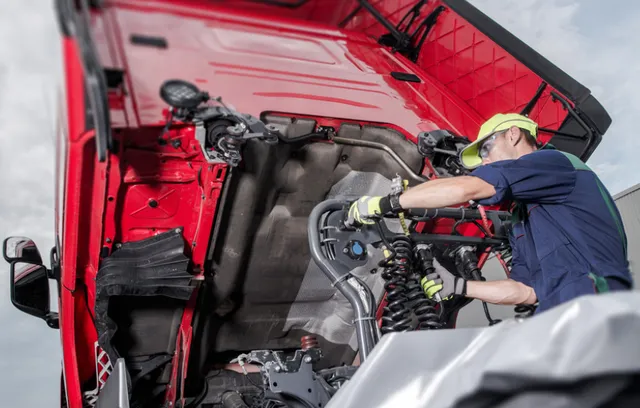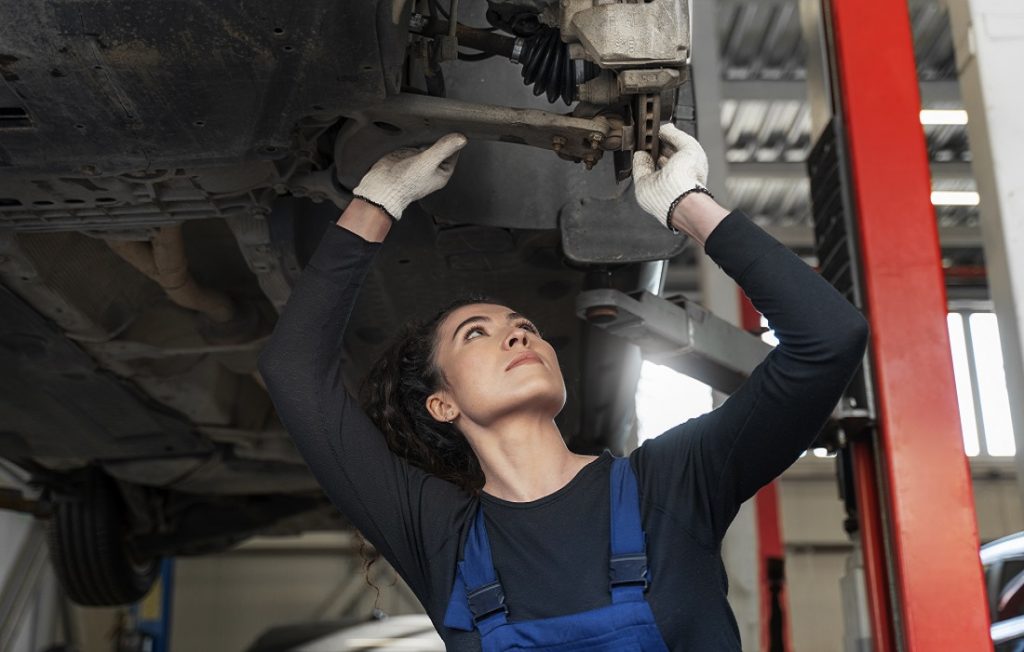Modern automobiles come with many different parts that all work together to provide the best performance, efficiency, and environmental awareness. The canister purge valve is one such element that is vital to sustaining these features. A failed purge valve is one of many causes for checking engine lights, and it is often difficult for mechanics to diagnose. We shall go into the idea of a purge canister valve in this article, examining what it is and its main purposes in relation to a truck’s pollution control system.
What is a Canister Purge Valve?
The purge valve, also known as the canister purge valve, is a crucial part of your EVAP (Evaporative Emission Control) system. By trapping them in a charcoal canister, this technology prevents gasoline vapours produced in your fuel tank from escaping into the atmosphere. The EVAP system gradually releases these vapours into your engine when operating at normal speed; the fuel in your engine then burns just like regular fuel. Your canister purge valve manages the flow of these vapours, controlling when and how much of them enter your engine.
The electrically powered canister purge valve is also frequently referred to as a canister purge solenoid. When the purge canister valve is stuck open, closed, or does not open at the appropriate moment, they are the most frequent problems. The EVAP system contains a solenoid-controlled valve called the canister purge valve. Usually, you can find it next to the gasoline tank or in the engine compartment. Its main duty is to control the fuel vapour movement between the charcoal canister and the engine’s intake manifold.
What Does a Canister Purge Valve Do?
Vapour Recovery:
Recovering fuel vapour from the charcoal canister is one of the main purposes of the canister purge valve. The charcoal canister, often referred to as an evaporative emission control canister, is used to retain fuel vapour that, when the engine is off, escapes from the fuel tank and, in older trucks, the carburetor. The activated charcoal canister traps this vapour to stop it from being released into the atmosphere.
Combustion
In an internal combustion engine, the burning of fuel occurs in a combustion chamber. The expansion and pressure from the gases created push the engine’s components into action.
Air-Fuel
In order for combustion to occur, a specific ratio of air and fuel must be pulled into the combustion chamber. Each engine uses a slightly different ratio, which the engine control unit (ECU) controls. This ratio is referred to as the air-fuel mixture.
Emissions
In vehicles, emissions refer to the gases that escape from the exhaust pipe during the process of burning gasoline.
Emission Reduction:
The canister purge valve solenoid is crucial in reducing harmful emissions such as hydrocarbons (HC) and volatile organic compounds (VOCs) by reintroducing and burning the captured fuel vapour. Because they contribute to air pollution and smog formation, reducing the release of these pollutants is essential for environmental protection and emission compliance.
The canister purge valve also helps avoid vapour lock, a condition where an excessive buildup of fuel vapour can obstruct normal fuel flow and reduce engine performance. By regulating the flow of vapour back into the engine, the valve maintains balance to prevent vapour lock.
Check Engine Light/Code
The vehicle’s computer constantly monitors several components’ performance and working conditions. If a part or system malfunctions, the computer will generate a code that can tell a technician where the problem is. In most cases, an error code will also lead to a check engine light, which indicates an issue inside the vehicle’s gauge cluster.
How Do You Check the Canister Purge Valve?
Depending on whether the engine is cold or warmed up, the vehicle’s computer will either open or shut the purge valve solenoid. The purge valve is always closed whether the engine is cold or off.
The purge valve opens when the engine is heated, sending petrol vapours to the engine to be burned off. To determine whether a hoover exists or not at the appropriate time, the line leading to the charcoal canister is removed and touched. There shouldn’t be any vacuum at the port because the valve remains closed when the engine is cold. Since the valve opens when the engine is hot, a vacuum should be sensed at the port after the engine has warmed up. There can be minor variations among manufacturers when the computer tells the valve to open, but it will at some point.
How do you Test the Canister Purge Valve?
- Disconnect the hose coming from the Charcoal Canister. Start the engine and feel at the port if there is a vacuum.
- The valve should be closed when the engine is cold, with no vacuum.
- If there is a vacuum at the port while the engine is cold, the purge canister valve is bad.
- Wait for the engine to warm up and feel at the port again if there is a vacuum.
- The valve should open when the engine is hot, and there should be a vacuum at the port.
Can a Purge Valve Be Tested Without a Multimeter?
Yes, a purge valve can be tested without a multimeter. During the cycle of the Evap system, of the engine warming up, the valve can be checked to see if it is open or closed.
Can a Purge Valve Be Tested Without a Vacuum Pump?
Yes, a purge valve can be tested without a Vacuum Pump. The onboard computer keeps the valve closed when the engine is cold and then opens it up when the engine is hot. Removing the line from the charcoal canister and checking for a vacuum by touching the port will show whether the valve is working.
How do we Change the Canister Purge Valve?
Step 1 – Disconnect the Vehicle’s Battery
The vapour canister purge valve is attached to a power source that provides electricity to the device, allowing it to turn the canister purge solenoid on and off. As a result, disconnecting the power supply by removing the positive and negative battery wires should be done first before replacing this part.
Step 2 – Locate the Vehicle’s Vapor Canister Purge Valve
This component is usually found on top of the engine or at the back of the fuel system on most automobiles. It will be equipped with an electrical harness and two vacuum lines, one of which connects to the fuel injector rail and the other to the EVAP canister near the fuel cell. Before removing this component, make sure it matches the replacement part.
Step 3 – Remove Both Electrical Harness and Vacuum Lines
Following the instructions in your truck repair shop manual, disconnect the electrical harness from the purge valve and the vacuum lines once you’ve found the relevant component. Mark the locations of each vacuum line to prevent putting them backwards, as many knowledgeable mechanics are aware of.
To determine which vacuum line contains the right fittings and where to reinsert, mark the line with coloured masking tape or two different coloured zip ties.
Step 4 – Remove the Vapor Canister Purge Valve
After locating the vapour purge canister valve and removing the harness and vacuum lines, you can now remove the valve. This part is frequently fastened to a bracket located close to the fuel injector rail or the firewall using bolts with a 10mm diameter. By removing the bolt and setting it to the side, you can remove the old canister purge valve from the vehicle.
Step 5 – Install the New Vapor Canister Purge Valve and Replace the Vacuum Lines and Harness
Put the truck in reverse to start the process of reinstalling this component, then remove the bracket and bolt to free the valve. While you should follow this general advice, always consult your vehicle’s service manual for exact instructions.
Install the Hoover hoses once the vapour canister purge valve is back in place, or replace them if they are frayed. Reinstall the electrical harness, and lastly.
Step 6 – Clear Codes and Test Vehicle
Reconnect the battery cables after that and start the truck. Use a scanning tool, if you have one, to get rid of any inaccurate codes. Check to see if the Check Engine Light is no longer on the dashboard after warming up the vehicle by starting it and allowing it to reach operating temperature.
Turn off your automobile and do a diagnostic scan if your check engine light is still on. Once the Check Engine or other lights have disappeared, restart the truck and remove the gas cap.
Choose Best Truck Repair Shop For Your Truck Today!
- Affordable
- Quick Fix
- Boost Truck Performance

How Much Does it Cost to Replace a Canister Purge Valve?
The price to replace a purge valve varies based on a number of variables, including the vehicle’s make and model, the purge valve’s kind, and its position. A purge valve replacement typically costs between $100 and $500, with labour making up a large amount of the overall cost. The difficulty of the installation, the requirement for specialised tools, and the price of the replacement parts are some elements that could raise the cost of replacing a purge valve. For a more precise estimate that takes into account your particular vehicle and location, it is advised that you speak with a qualified mechanic or dealership.
Where is the Canister Purge Valve Located?
The Evaporative Emission Control (EVAP) system includes the purge valve. The fuel vapours are blocked off by it, keeping them from leaving and entering the atmosphere. The purge valve releases the vapours into the engine when enough pressure has built up, burning them up and reducing emissions. The canister purge valve is connected to the engine or the intake manifold inside the engine compartment. It can be discovered close to the gasoline tank in some trucks.

